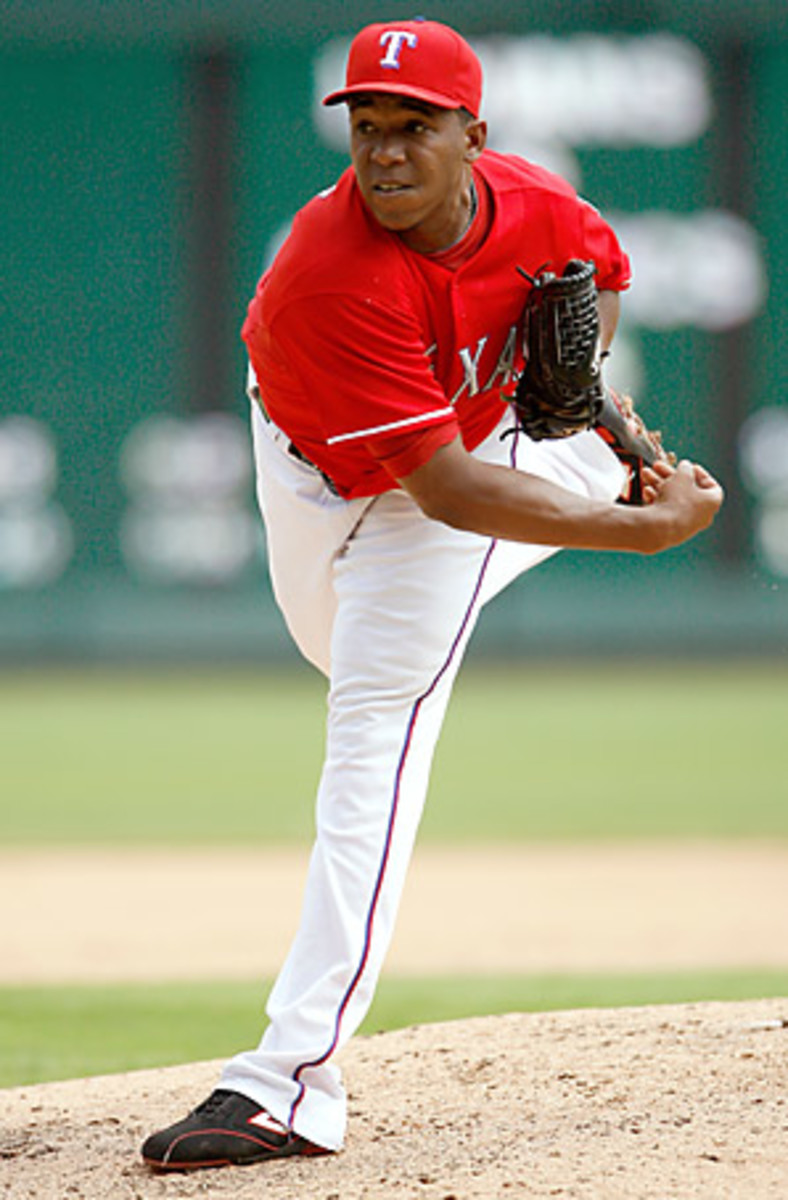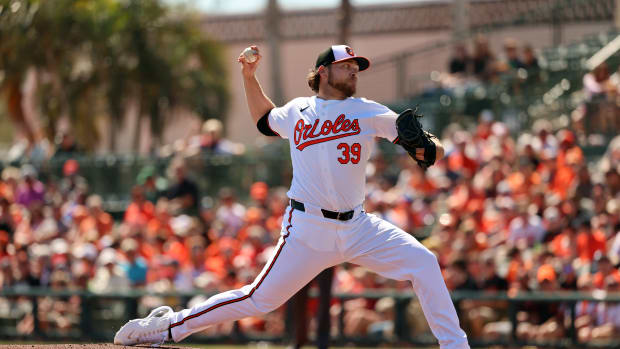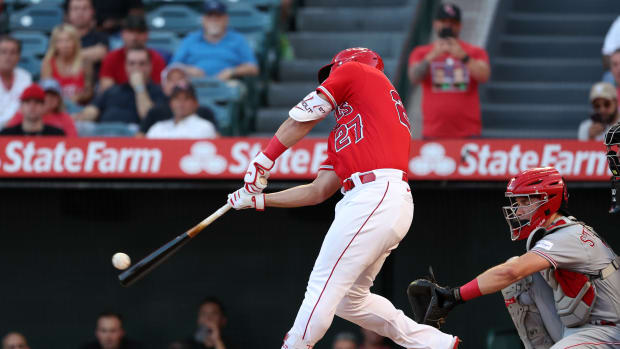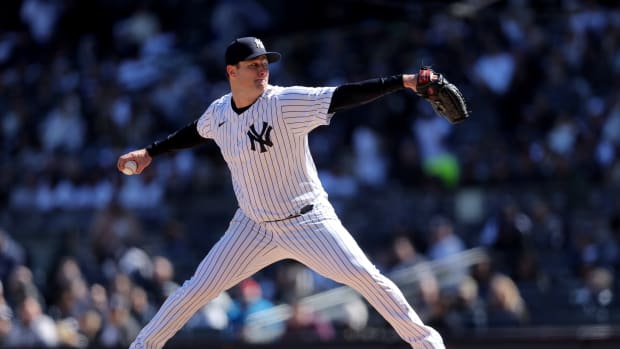
MLB's best and worst farm systems
Baseball America ranks the 30 MLB farm systems twice a year -- in the spring, as the minor league season is about to start, and again every December in our Prospect Handbook.
It's a collaborative effort, and staff members don't always agree on what constitutes a strong system. Is depth what matters, or is it better to have a small group of players who become big league regulars and perhaps one or two stars?
For the personal ranking presented here, the emphasis is on star power. That's why the Texas Rangers, who were No. 1 in BA's rankings last year, remain on top even after graduating such talents as Elvis Andrus, Taylor Teagarden, Julio Borbon, Derek Holland and Tommy Hunter to the major leagues.
Right-hander Neftali Feliz is still considered a prospect; he retains rookie eligibility after having thrown just 31 innings in 20 appearances with Texas. He leads the way for a Rangers system still bursting with impact talent, though not as much as it had last year. Texas' system is still good enough for No. 1, as it appears that overall minor league talent has hit a bit of a down cycle.
1. Rangers: Feliz has a special arm and could still be an impact starting pitcher, but if he's not, he has already shown the ability to be a shutdown reliever. The Rangers' pitching depth remains impressive, as lefty Martin Perez earned top prospect honors in the low Class A South Atlantic League in his first full season. Texas' top signed draft pick, right-hander Tanner Scheppers, showed premium stuff in the Arizona Fall League, and the system has power lefties in Kasey Kiker and Robbie Ross. Texas lacks depth in terms of hitters, but switch-hitting first baseman Justin Smoak isn't far away from being able to help a lineup that needs it.
2. Rays: Talk about top-heavy. Every system would love to have two big league-ready right-handers like Wade Davis and Jeremy Hellickson, who both have stuff, command and success at the upper levels. And neither of them is even the Rays' top prospect -- that honor goes to five-tool center fielder Desmond Jennings, whose only issue is durability. In between Triple-A and low Class A, the Rays are a bit thin, but they have a bevy of power arms at the lower levels, led by left-hander Matt Moore.
3. Giants: San Francisco has two elite talents in catcher Buster Posey and left-hander Madison Bumgarner, both of whom should contribute to the major league club in 2010. The Giants also have depth, despite the uncertain status of slugger Angel Villalona, who was stripped of his U.S. visa after an off-season murder charge in his native Dominican Republic. San Francisco has shortstop options, some solid bats (such as outfielder Thomas Neal) and solid depth, but it's really about the stars.
4. Phillies: Philadelphia had the depth to trade for Cliff Lee and still have a top-flight farm system. Outfielder Michael Taylor has hit .333 over the last two seasons, rocketing to Triple-A, and fellow outfielder Dominic Brown has better tools, though he's still a bit raw. Righty Kyle Drabek, son of the former Cy Young Award winner Doug Drabek, has three above-average pitches to go with excellent athletic ability. Beyond their Big Three -- all of whom have performed at Double-A or above -- the Phillies are bursting with young power arms, toolsy Latin American infielders and athletic outfielders, such as Anthony Gose.
5. Indians: Cleveland has traded many of the key players from its 2007 playoff team. That's cold comfort to Tribe fans, but many of the prospects acquired in those trades now give the Indians one of the game's top farm systems. The organization's top arms, right-hander Jason Knapp and left-hander Nick Hagadone, both were trade pickups, with Knapp coming from the Phillies in the Cliff Lee deal and Hagadone from Boston as the key piece in the Victor Martinez trade. Catcher Carlos Santana, acquired from the Dodgers for Casey Blake, is a switch-hitting offensive force who was the MVP of the Eastern League in 2009, and 2008 first-round pick Lonnie Chisenhall reached Double-A in his first full pro season.
26. Nationals: They have the best prospect in the game in No. 1 draft pick Stephen Strasburg, plus solid talents in catcher Derek Norris, right-hander Drew Storen and shortstop Danny Espinosa. Beyond that, though, the Nats have very little help, especially at the upper levels, which is a pity considering the state of the big-league roster.
27. Diamondbacks: Years of conservative drafts have left Arizona painfully short on athletes, especially up the middle of the diamond. Plus top prospect Jarrod Parker, a right-hander drafted third overall in 2007, will miss next season after having Tommy John surgery.
28. Blue Jays: Toronto would be No. 30 if not for last summer's Scott Rolen trade, which brought needed pitching talent from the Reds. Toronto's top hitters, such as infielders Justin Jackson and Kevin Ahrens and catcher J.P. Arencibia, had poor seasons in 2009, and the Jays also failed to sign three of their first four draft picks this year.
29. Cardinals: Ranked eighth last spring, St. Louis traded away both star power and depth in 2009 in acquiringMatt Holliday and Mark DeRosa. What's left is a bunch of role players and 2009 first-rounder Shelby Miller, a promising right-hander but a prep pitcher who has yet to play a full season.
30. Astros: Houston has added solid talent in its last two first-rounders, catcher Jason Castro (2008) and Jiovanni Mier (2009), as well as '08 supplemental pick Jordan Lyles, a promising right-hander. But the Astros' system is full of holes -- it hasn't produced a team with a winning record since 2007.
Rather than rank the remaining 20 teams, where it's really splitting hairs, I've listed them alphabetically in two categories.
Braves: Depth took a hit in '09, but outfielder Jason Heyward lifts system himself.
Brewers:Alcides Escobar (still barely eligible), '09 draft pitchers keep Milwaukee strong.
Marlins: Still thin on arms, but Florida's bats, led by OF Mike Stanton, still impress.
Orioles: If Josh Bell and Brandon Snyder are legit corner IF bats, O's could be interesting.
Pirates: Impressive depth behind top prospects Pedro Alvarez, Tony Sanchez.
Red Sox: System is very young, but SS/RHP Casey Kelly, OF Ryan Westmoreland could be special.
Rockies: Four impact pitching prospects, led by '09 first-rounder Tyler Matzek.
Royals: Excellent top-level pitching supplemented by strong '09 draft class.
Twins: Solid upper-level hitters aided by influx of draft and international talent in '08.
Yankees: Slugging catcher Jesus Montero ranks among minors' best hitters.
Angels: Bevy of draft picks, led by OF Mike Trout, improved system's depth.
Athletics: Natural regression after all those rookies in '09; whither Michel Ynoa?
Cubs: Much better than at this point last year, led by SS Starlin Castro.
Dodgers: L.A. has spent less on draft picks the last two years than any club, and it shows.
Mariners: Still reeling, especially on the mound, from years of Bill Bavasi's management.
Mets: Solid top 10, but the Mets don't have anyone likely to help in New York in 2010.
Padres: Much-improved system still was down long enough to help cost GM Kevin Towers his job.
Reds: Hard to fathom Rolen deal, which cost power arms, and handling of top prospect IF/OF Todd Frazier's position.
Tigers: Top arms are green, and organization overall lacks athleticism.
White Sox: Decent talent, but system was thinned by graduations, trades.



































